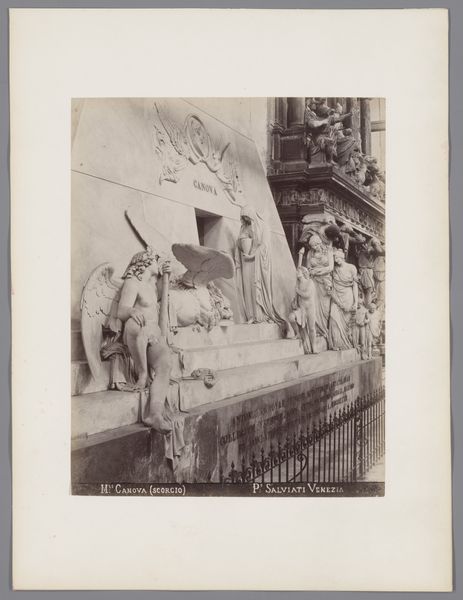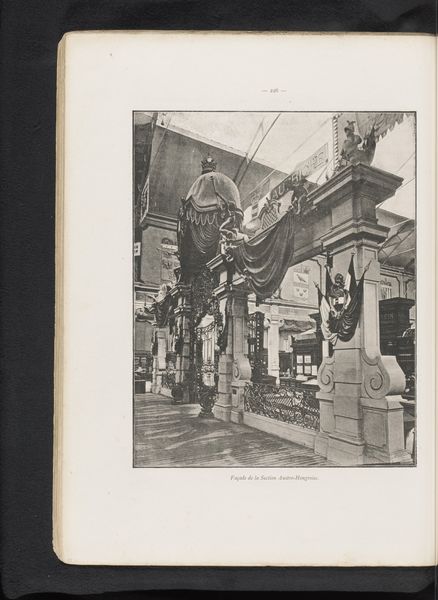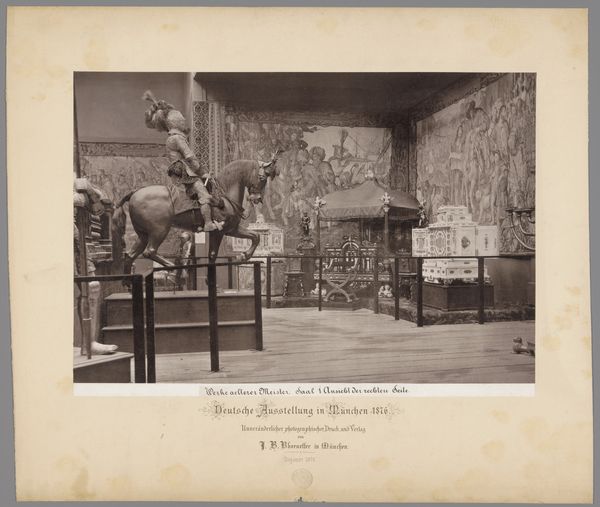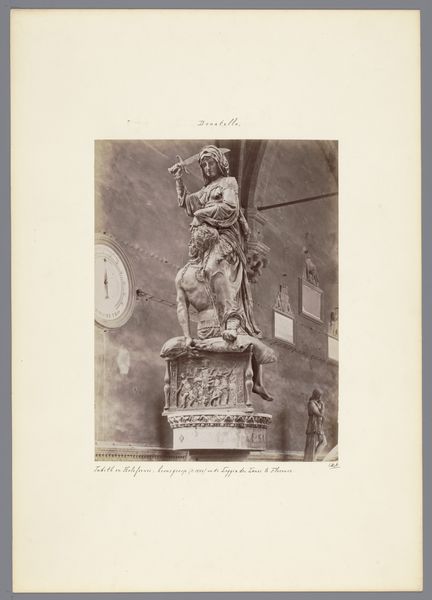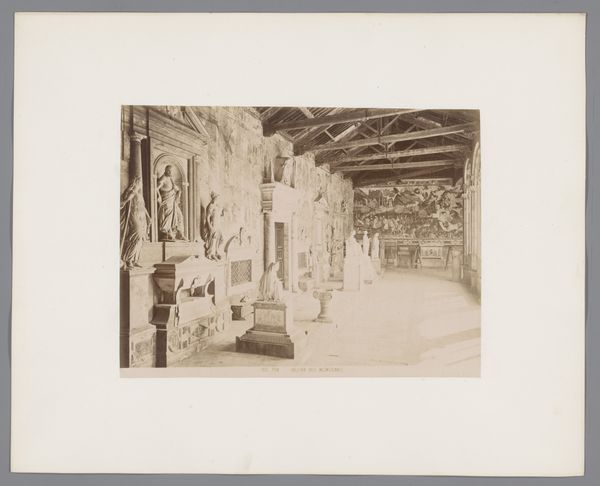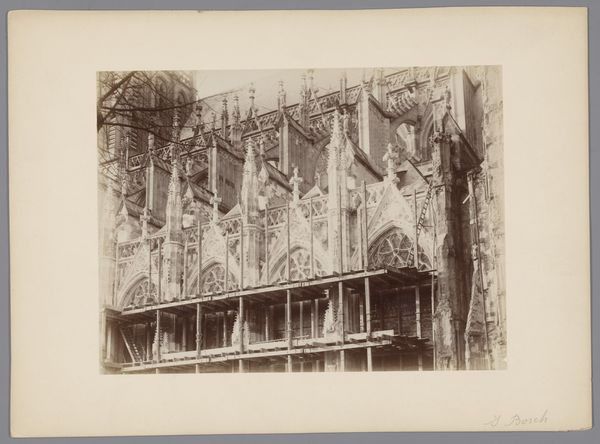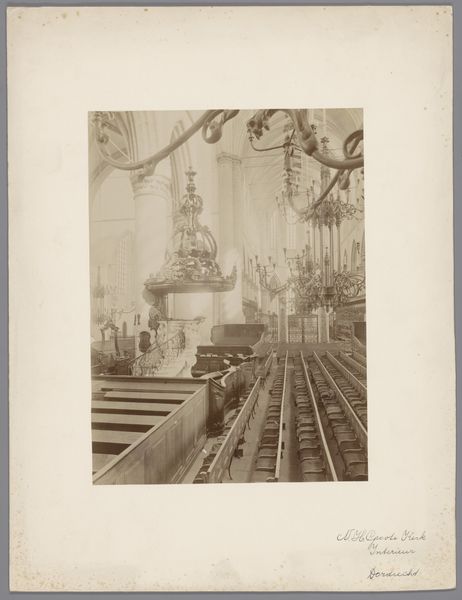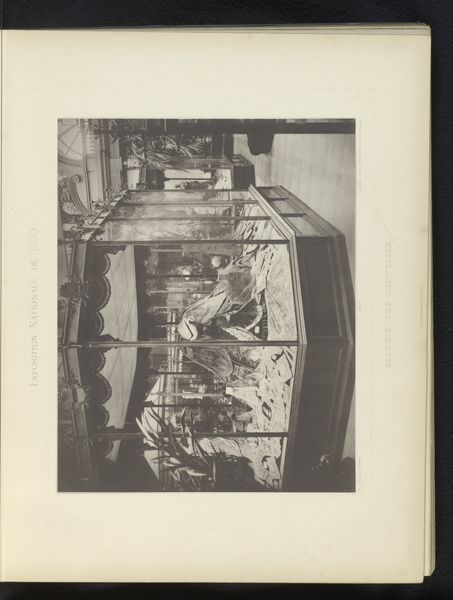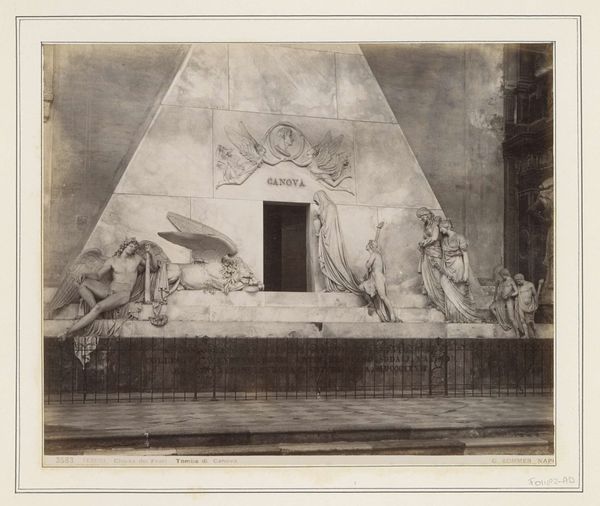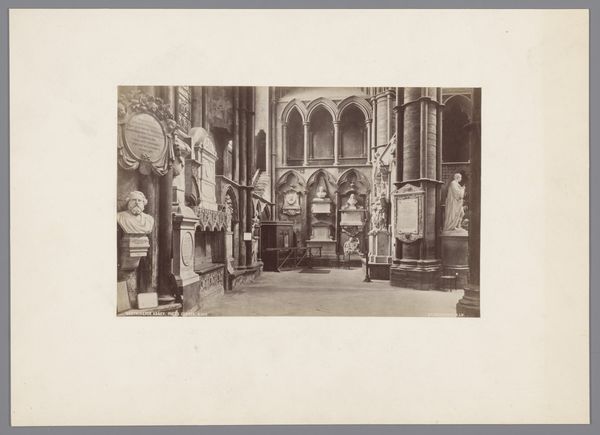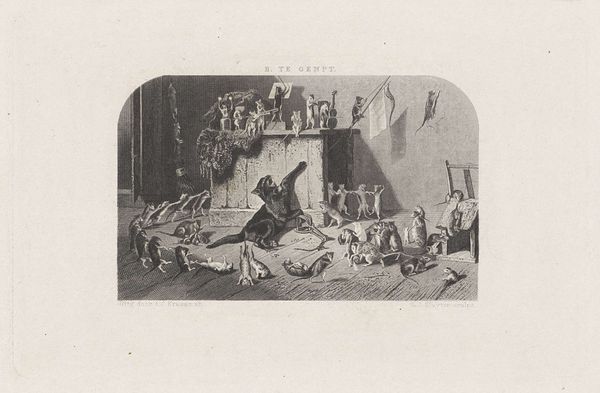
Monument voor Canova in de Basilica di Santa Maria Gloriosa dei Frari in Venetië 1860 - 1881
0:00
0:00
bronze, photography, sculpture
#
portrait
#
statue
#
bronze
#
photography
#
sculpture
#
19th century
#
cityscape
#
history-painting
#
italian-renaissance
Dimensions: height 259 mm, width 199 mm
Copyright: Rijks Museum: Open Domain
This albumen print, captured by Carlo Ponti, shows the monument to Canova in the Basilica di Santa Maria Gloriosa dei Frari in Venice. Ponti was working in the 19th century, an era when photography was not just documenting art but shaping its reception. Consider the monument itself: a tribute to Antonio Canova, the celebrated neoclassical sculptor. It was designed by Canova but executed by his students, and the monument’s design was actually appropriated from a previous monument to Titian. Now, think about the role of institutions. The Basilica, a religious space, becomes a gallery for celebrating artistic genius. Photography, a relatively new medium, democratizes access to art, spreading images far beyond Venice. Ponti’s photograph immortalizes the monument and, by extension, Canova's legacy, contributing to the construction of an artistic canon. Historians delve into archives, letters, and exhibition records to understand these layers of meaning. Art isn't just about aesthetics; it's a product of social forces and institutional frameworks.
Comments
No comments
Be the first to comment and join the conversation on the ultimate creative platform.
